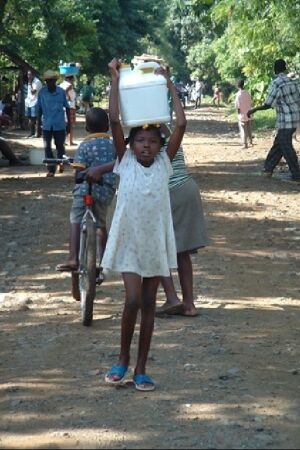Equality and Gender Gap – 2017 edition


The pay gap is finally closing in many areas of the world, including the US, with some cities even boasting women earning a smidge more.


Quality of Life
Save the Children, a charity organization specializing in children’s rights, has compiled a very large body of research on best and worst countries to be a girl in. The results are proof positive that there’s still a lot to be done to make women live better lives, or at least closer to those of their male counterparts. The study looked at very important factors such as child marriage, fertility in adolescent women, percentage of maternal mortality and women in politics, with additional attention being paid to how often women complete their secondary education compared to men.

Research has shown that out of 144 tested countries, bottom 20 were all located in sub-Saharan Africa. Nearly all of the least girl-friendly countries struggle with poverty, sickness and lack of education, where child marriage and dying at birth are still all too commonplace. At the same time, countries where girls have it better include Finland, Netherlands, Norway and Belgium – states where poverty, sickness and lack of education are things of the past. It may prove that as a society, we tend to treat women much worse when there’s little money or education. However, no matter what the correlation, there’s still clear room for improvement, as the US, for example, ranks only 32, while progressive Australia only 21, right above Poland. It’s surprising that countries where child marriage is illegal and maternal mortality is tightly controlled are still not considered the best places to be a woman. Yet there’s another issue that is also looked at: political and educational participation. That’s areas at which developed countries do excel, but where objective numbers do not stack up to 50/50 split between male and female participation. Hopefully, that will change soon.

Women in the workplace
The state of affairs is not much different over at the labour force. According to a recent research compiled by the Economist, the glass ceiling has not been broken, just slightly elevated over the years. The least improvement, surprisingly, is shown in the developed countries of OECD. There, compared to 60% of women entering the workforce in 2005, only a slight bump of 3% was measured 10 years hence. Women still earn only 85% of what men do in the OECD, but some countries fare notably better than others. Just as in previous years, women have it good in business in Sweden, Norway, Finland or Iceland. Traditionally, women occupy most top positions in business in these countries, and the gender gap sways in favour of the fairer sex. In Scandinavian countries, women belong in almost 40% of the boardrooms, and late last year 48% of all parliament spots were taken by women in Iceland, a welcome shift for the better in a country known for its world-firsts.

VOCABULARY
slew of sth – wysyp czegoś, seria czegoś
things are looking up – sytuacja wygląda dobrze/polepsza się
minor – pomniejszy
amid sth – pośród czegoś
hubbub – szum, wrzawa
science – nauka
to notice sth – dostrzec coś
the fairer sex – płeć piękna
to dive in – zagłębić się (w coś), dać nura
pay gap – róznica w płacy mężczyzn i kobiet
to boast sth – (móc) się czymś pochwalić
smidge – odrobinę
combined with sth – w połączeniu z czymś
acute – dotkliwy
shortage – niedobór, brak
STEM (science, technology, engineering, mathematics) – przedmioty ścisłe oraz nauki techniczne
box office – wpływy kasowe (z pokazu filmu)
X darling – ulubieniec X, pupilek X
sth is far from over – coś się jeszcze wcale nie skończyło, daleko do końca
barely – ledwie
recognition – uznanie
equality – równość
by and large – ogólnie rzecz biorąc
to remain – pozostać
valid – tu: istotny, sensowny
charity – dobroczynny
to compile – skompilować, utworzyć
body of research – badania, zbiór danych/badań
proof positive – najlepszy dowód (na coś), niepodważalny dowód
counterpart – odpowiednik
factor – czynnik
fertility – płodność
adolescent – nastoletni, dorastający
maternal mortality – umieralność matek (okołoporodowa)
compared to – w porównaniu do
bottom – dolny
sub-Saharan Africa – obszary Afryki Subsaharyjskiej
to struggle with sth – borykać się z czymś
poverty – ubóstwo
commonplace – powszechny
sth is a thing of the past – coś należy do przeszłości
society – społeczeństwo
correlation – korelacja
room for improvement – pole do poprawy, możliwość poprawy
progressive – postępowy
illegal – nielegalny
tightly – ściśle, precyzyjnie
to excel at sth – celować w czymś
to stack up to sth – sprostać czemuś, dorównać
split – rozdźwięk, podział
state of affairs – stan rzeczy
labour force – siła robocza, pracownicy (ogółem) (UK)
glass ceiling – niewidzialna bariera (coś, co uniemożliwia kobietom na równe zarobki i szanse rozwoju w społeczeństwie)
slightly – nieco
to elevate – unieść
OECD (Organization for Economic Co-operation and Development) – OECD, Organizacja Współpracy Gospodarczej i Rozwoju
workforce – siła robocza
bump – podbicie, wzrost (nieznaczny)
to measure – zmierzyć
hence – po, od czasu (czegoś)
to fare X – radzić sobie X (dobrze/źle)
notably – zauważalnie
to sway – wahać się
in favour of sb – na czyjąś korzyść
boardroom – rada nadzorcza, poziom kierowniczy spółki
parliament – parlament
shift – zmiana, przesunięcie
world-first – rekord świata, coś, co jest pierwsze na świecie
by Prochor Aniszczuk







